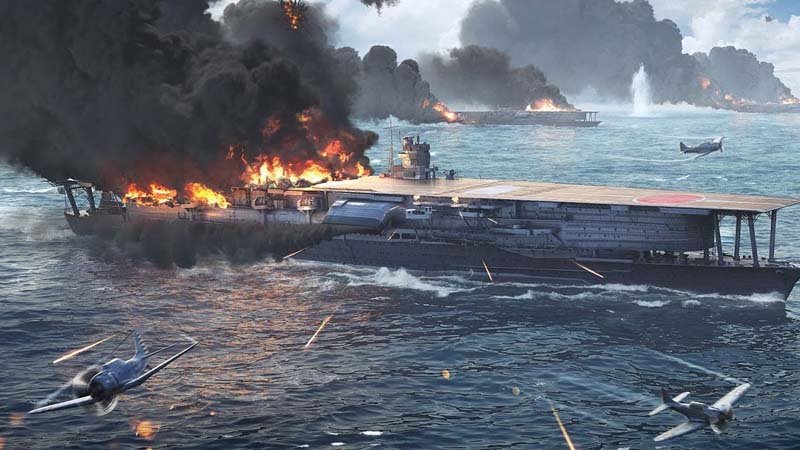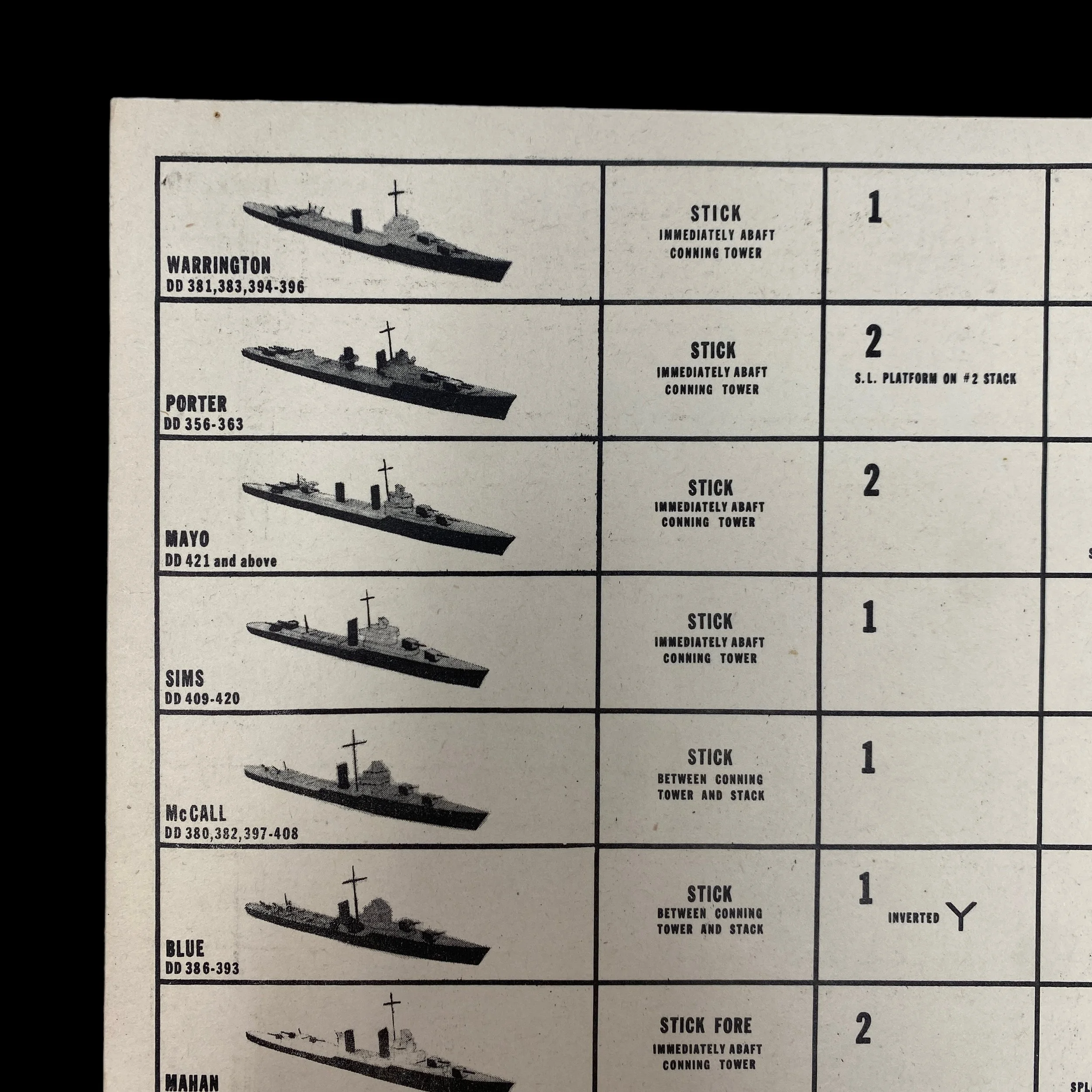WWII 1942 WWII ‘RESTRICTED’ U.S. Navy Ship Identification Chart - Pacific Theater USN Veteran Bring-Back*













WWII 1942 WWII ‘RESTRICTED’ U.S. Navy Ship Identification Chart - Pacific Theater USN Veteran Bring-Back*
Comes with hand-signed C.O.A.
This incredible and museum-grade early WWII ‘RESTRICTED’ U.S. identification chart is dated March 1942 and was used by the USAAF and USN in both the Pacific Theater and European Theater during World War II. This double-sided identification chart comes from the bring-back collection of a WWII Pacific Theater USN veteran.
World War II stands as one of the most pivotal events in human history, marked by global conflict and unprecedented technological advancements. At the heart of this conflict, naval power played a significant role, and ship identification became a critical component in the theater of war. The United States Navy recognized the importance of distinguishing friend from foe, not only for strategic purposes but for the safety and survival of its own forces. Ship identification charts and recognition posters became invaluable tools, used by pilots, sailors, and intelligence officers throughout the Pacific, European, and Mediterranean theaters.
The Necessity of Ship Identification Charts
In the tumultuous theater of war, pilots and sailors found themselves in life-or-death encounters with enemy forces on a regular basis. Mistakenly targeting friendly ships or failing to identify enemy vessels could lead to catastrophic consequences. Recognizing the need for an effective solution, the United States Navy introduced ship identification charts and recognition posters. These visual aids depicted the silhouettes of various ships and aircraft, allowing personnel to study and memorize the distinguishing features of each type. By mastering these silhouettes, naval personnel could rapidly identify ships, even in the heat of battle, providing precise combat reports and avoiding friendly fire incidents.
Combat Reports and Immediate Engagement
The ability to promptly and accurately identify an enemy ship was a decisive factor in naval warfare during World War II. When pilots or sailors spotted an unfamiliar vessel, their swift response was critical. A quick radio report of the enemy ship's type and location allowed for immediate engagement and ensured that reinforcements could be dispatched as necessary. Ship identification charts facilitated this process by enabling personnel to recognize enemy vessels at a glance, greatly reducing response times and contributing to the effectiveness of naval operations.
Friendly Fire and the Role of Intelligence
Friendly fire incidents were not uncommon during World War II, and these tragic accidents often occurred due to the confusion and chaos of battle. The United States Navy recognized the need to mitigate such incidents, as well as to distinguish between friendly and enemy forces. Intelligence resources, including ship identification charts and recognition posters, were an important means of achieving this goal. By providing naval personnel with a visual reference for ship and aircraft recognition, these charts reduced the risk of accidentally targeting friendly vessels and enhanced overall safety during combat.
The Educational Value of Ship Identification Charts
Beyond their immediate tactical importance, ship identification charts held educational value. These posters not only enabled personnel to recognize ships but also served as valuable tools for understanding the intricacies of naval design. By studying the silhouettes and characteristics of various ship types, sailors and pilots gained a deeper appreciation of naval architecture, which could aid in making more informed decisions during engagements.
Determination of Ship Type
In combat areas, the ability to determine an enemy ship's type constituted a primary step in identification. Accurate estimation of a ship's size at sea was often extremely challenging, especially when observing vessels from a distance or in adverse weather conditions. Recognition posters provided personnel with a range of ship silhouettes, allowing them to distinguish different types of fighting ships based on their overall shape, size, and key characteristics. This critical knowledge enhanced situational awareness and played a crucial role in strategic decision-making.
World War II brought about significant advancements in naval warfare, accompanied by the challenges of ship and aircraft identification in the heat of battle. The United States Navy's ship identification charts and recognition posters were instrumental in addressing these challenges. They not only saved lives by reducing the risk of friendly fire but also enhanced the effectiveness of naval operations by enabling quick, accurate identification of enemy vessels. These posters served as both practical tools for combat personnel and educational resources for those seeking a deeper understanding of naval design. In an era marked by the complex and perilous theater of war, ship identification charts stood as a testament to human ingenuity and adaptability in the face of adversity, ultimately playing a vital role in shaping the outcome of World War II.